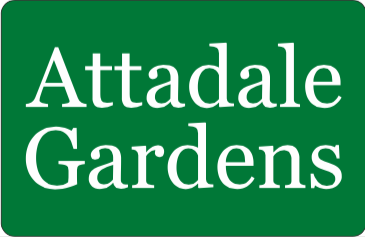Attadale House was built in 1755 by Donald Matheson whose father, John, was the factor for the Seaforth estates in Kintail, Lochalsh and Lochcarron. The love stone above the middle first floor window shows their initials DM and E MK and a heart.
Little is known of the original garden, though the laburnum to the Southeast and the impressive giant ash to the northwest of the house date from this period. The sunken garden too was probably built by the Mathesons. It does not line up with the West wing of the house, which the more symmetrically minded Victorians would have ensured. The beautifully built stone field drains discovered in the wood behind the house were probably used for agricultural purposes and date from the early 19th century.
A descendant of Donald Matheson, Alexander, who made his fortune in the family business Jardine Matheson in India and the Far East, built Duncraig and Ardross castles on his return. In the 1880s Attadale was leased and then in 1910 sold to Baron von Schröder. About that time Queen Victoria had made it fashionable to own sporting estates in Scotland. The Baron started planting rhododendrons and imported trees, including wellingtonias, tsugas and other redwoods. He laid out an elaborate system of paths and steps around the garden which his son, Wilhelm von Schröder, extended over 20 acres. Wilhelm took British nationality in 1912 after joining the British army, and became Captain Billy Schroder. He and his wife are buried on the far side of the field opposite the house.
After Captain Schroder’s death in 1945 Martin Gibbs bought the estate intending to farm. In 1952 he sold it to Ian Macpherson, father of the present owner. Their branch of the Macpherson clan came from Sleat and Orbost in Skye. Great great grandfather Dr Hugh Macpherson acquired the island of Eigg in the nineteenth century. He was Vice Principal of King’s College, Aberdeen.
Ewen Macpherson's wife Nicolette, always Nicky, was born in South Africa, a van der Bijl. The van der Bijl moved to the Cape from near Rotterdam in the mid-seventeenth century and become anglicised when the British defeated the Dutch in 1805. She trained as a painter in London and has always been greatly influenced by childhood memories of gardens such as Kirstenbosch and Vergelegen at the Cape








